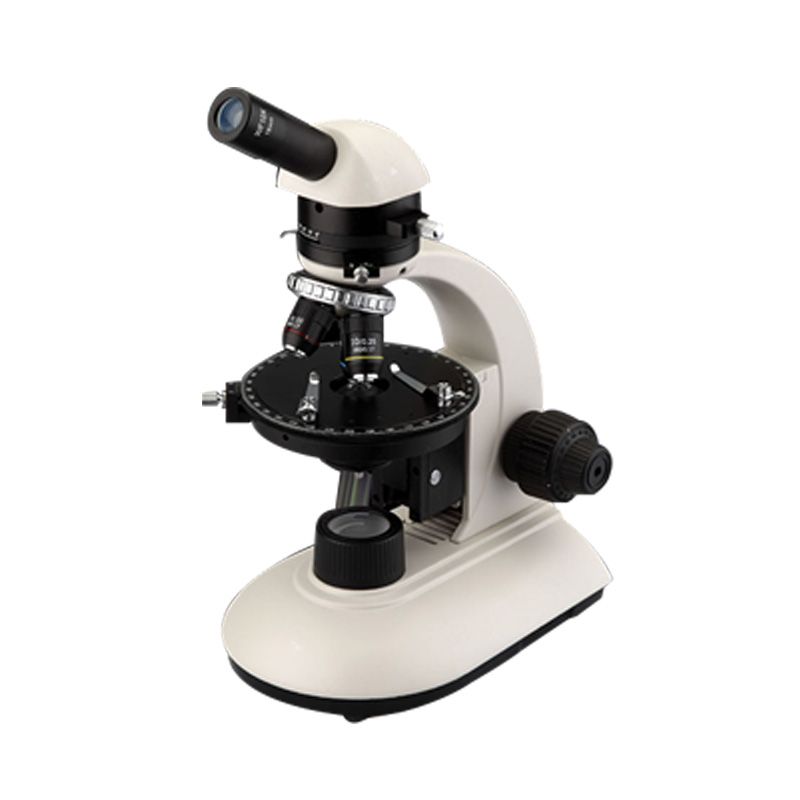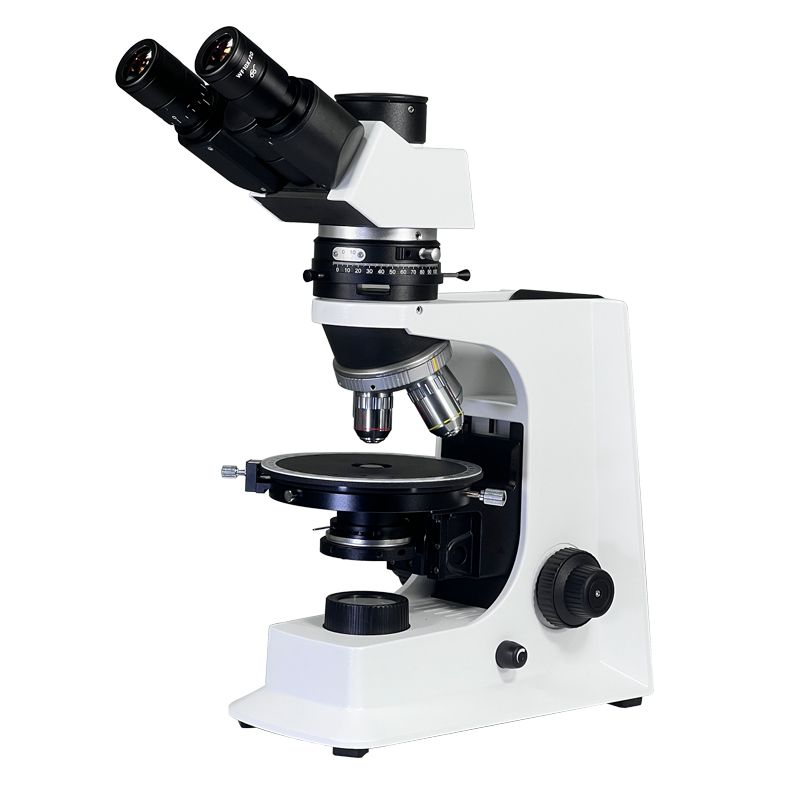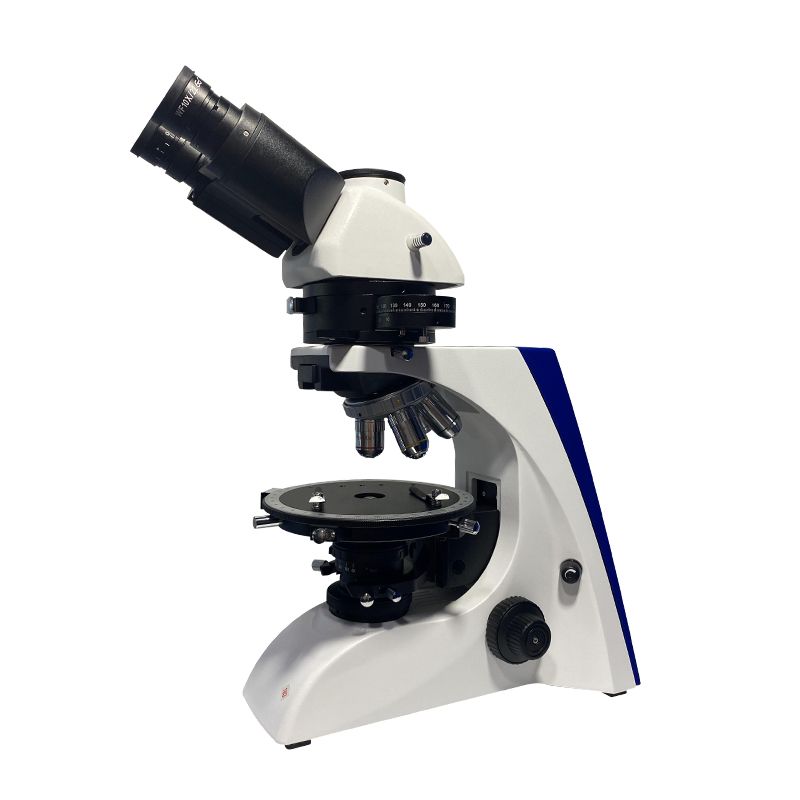The world we perceive with our naked eyes hides a deeper reality, unseen by conventional microscopes. However, polarizing microscopes stand as marvels of optical science, unveiling intricate details of crystalline structures and materials invisible to the naked eye. It utilizes the unique properties of polarized light to unveil the secrets of birefringent materials. Unlike its standard counterpart, this specialized instrument transcends mere magnification, revealing internal structures, stress patterns, and subtle composition variations invisible to ordinary light. Their significance spans across various scientific disciplines, from geology to material science, and from biology to forensic investigation. In this comprehensive overview, we delve into the fundamental principles, diverse types, and wide-ranging applications of polarizing microscopes. Hope to help you learn more about polarized light and these advanced instruments.
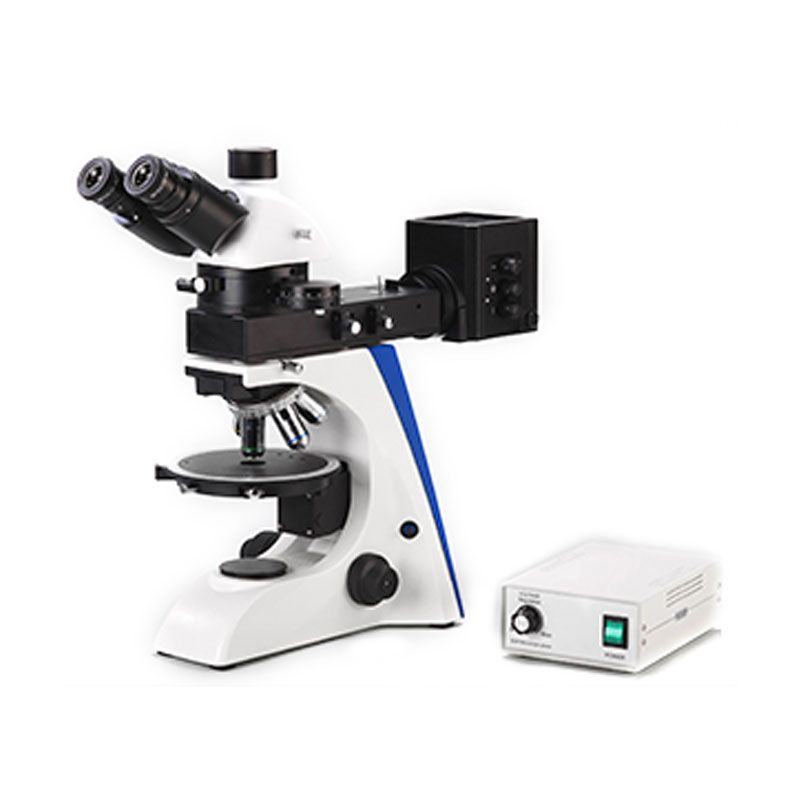
What are the Principles of Polarizing Microscopes?
A polarizing microscope utilizes polarized light to investigate the optical properties of samples. Polarized light refers to a unique type of light in which the electromagnetic waves oscillate predominantly in a single plane. Unlike ordinary light, which oscillates in all directions perpendicular to its direction of propagation, polarized light waves vibrate in a specific orientation. This phenomenon occurs when light passes through a polarizing filter or undergoes certain interactions, such as reflection, scattering, or refraction. This unique property allows the polarizing microscope to analyze how materials influence the light passing through them. Some materials, like glass and plastic, are isotropic, meaning they have the same optical properties in all directions. In contrast, anisotropic materials, such as minerals and crystals, interact differently with light depending on its orientation. This interaction reveals valuable information about their structure, composition, and internal stresses.
What is Isotropic and Anisotropic?
Isotropic and anisotropic refer to the dependence of a material’s properties on direction.
| Feature | Isotropic | Anisotropic |
| Meaning | Same in all directions | Different in different directions |
| Property Dependence | Properties independent of direction | Properties vary with direction |
| Examples | Liquids, gases, amorphous solids (glass, plastic) | Crystals, minerals, wood, muscle tissue, liquid crystals |
In the context of a polarizing microscope:
- Isotropic materials: Do not show birefringence (splitting of light into two rays) and typically appear dark under crossed polarizers.
- Anisotropic materials: Do show birefringence and exhibit characteristic interference patterns under crossed polarizers, revealing information about their structure and composition.
By analyzing these interference patterns, scientists can glean valuable insights into the material’s properties, aiding in fields like geology, biology, chemistry, and materials science.
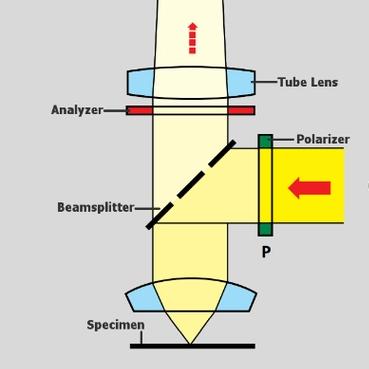
Key Components of Polarizing Microscope
A polarizing microscope builds upon the foundation of a standard compound microscope but adds several key components specific to its unique function:
- Light Source and Management:
- Light source: The light source provides illumination for the sample. Similar to compound microscopes, a bright, stable light source (e.g., halogen lamp, LED) is needed. In some advanced setups, the light source may be equipped with a field diaphragm to control the amount of light entering the microscope.
- Condenser: Most polarizing microscopes utilize achromatic, strain-free condensers to provide even illumination across the sample, especially at low magnifications. Some condensers can even rotate to allow for specialized techniques.
- Polarization System:
Polarizing microscopes feature two polarizing filters: the polarizer and the analyzer. The polarizer, placed beneath the specimen, polarizes light before it enters the sample. The analyzer, positioned above the specimen, further filters polarized light, allowing for observation and analysis.
- Polarizer: This filter, typically located below the condenser, restricts light vibrations to a single plane, creating polarized light. Different types of polarizers exist, such as Nicol prisms and film polarizers.
- Analyzer: Positioned above the sample, this filter analyzes the light emerging from the sample after interacting with it. By rotating the analyzer relative to the polarizer, various interference patterns are observed. Similar to polarizers, different types of analyzers exist.

- Observation:
- Objectives: The objective lenses are responsible for magnifying the sample and collecting light transmitted through it. Polarizing microscopes typically have a range of objective lenses with different magnification powers to accommodate various sample sizes and resolution requirements. Specialized objective lenses designed for the specific wavelengths used in polarized light microscopy are employed. These objectives are also strain-free to minimize internal birefringence.
- Eyepieces and Eyepiece Analyzer: The eyepieces provide additional magnification and enable the user to view the sample through the microscope. Standard eyepieces are used for observation, often with crosshairs for precise measurements. In polarizing microscopes, some eyepieces may also contain an additional polarizing element known as the eyepiece analyzer, which further enhances contrast and allows for more precise control over the polarization of light entering the observer’s eye.

- Additional Components:
- Stage: The sample stage holds the specimen being observed. It is equipped with mechanical controls to move the sample horizontally and vertically, allowing for precise positioning and focusing. The stage in a polarizing microscope typically rotates a full 360 degrees to allow for the observation of birefringence at different orientations.
- Compensators (optional): Compensators are optical elements used to introduce controlled phase shifts or alterations in the polarization state of light passing through the sample. They are often employed in quantitative polarization microscopy to measure birefringence, retardation, and other optical properties of materials.
- Optional Accessories:
- Bertrand Lens: This lens allows for the observation of interference figures, providing valuable information about the sample’s properties.
- Camera Adapter: Modern microscopes often facilitate attaching cameras for capturing images and videos of observations.

What are the Types of Polarizing Microscopes?
There are several ways to classify polarizing microscopes, each offering a different perspective depending on the chosen criteria. Here are some common types:
From Illumination Type
- Transmitted light microscopes: Utilize light transmitted through the sample, suitable for transparent or thin materials like rock thin sections and biological samples.
- Reflected light microscopes: Designed for opaque materials like metals, ceramics, and minerals, using reflected light and specialized objectives.
Scopelab providing 3 series of Polarizing Microscopes: B-POL, SMART-POL, and BK-POL. They are all transmitted light sources. Among them, BK-POLF uses a reflective light source, and BK-POLR uses a transflective light source.
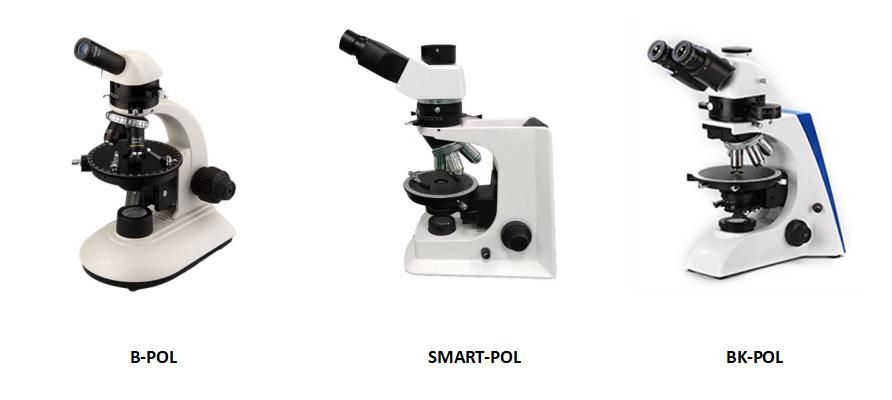
From Application Area
- Petrographic microscopes: Geared towards geology and mineralogy, optimized for analyzing rock and mineral thin sections.
- Biological microscopes: Adapted for biological research, featuring specialized condensers and objectives for studying birefringent structures in cells and tissues.
- Materials science microscopes: Cater to material analysis, often equipped with dark-field, DIC, and heating stage capabilities.
- Forensic microscopes: Designed for forensic investigations, incorporating features like crosshairs and graduated stages for precise measurements.
From Advanced Features
- Standard polarizing microscopes: Provide basic functionalities for observing birefringence and interference patterns.
- Microspectrophotometers: Combine microscopy with spectroscopy for detailed compositional analysis.
- Confocal polarizing microscopes: Offer 3D analysis capabilities by merging confocal microscopy with polarization.
- Micro-Raman microscopes: Combine Raman spectroscopy with polarization for in-depth chemical analysis.
Each type of polarizing microscope offers unique advantages and capabilities, allowing researchers and analysts to investigate a wide range of materials and samples with precision and clarity. The choice of a microscope depends on the specific requirements of the application and the nature of the samples being studied.

What are the Uses of Polarizing Microscopes?
Polarizing microscopes find applications across diverse fields, unlocking valuable insights from materials based on their interaction with polarized light. Here’s a glimpse into their extensive uses:
- Geology and Mineralogy:
- Rock and mineral identification: Analyzing the optical properties of minerals in thin sections reveals their composition and origin.
- Understanding rock formation processes: Studying the fabric and stress patterns within rocks sheds light on their geological history.
- Detecting gemstones and industrial minerals: Identifying unique birefringence patterns aids in gem identification and assessing valuable mineral deposits.
- Biology and Cell Biology:
- Examining plant cell walls: The cellulose fibers in plant cell walls exhibit distinct birefringence, helping understand their structure and function.
- Identifying pathogenic microorganisms: Certain microbes display characteristic birefringence patterns, aiding in their diagnosis and classification.
- Analyzing muscle and nerve tissue: Studying the birefringence of muscle fibers and nerve sheaths provides insights into their organization and function.
- Chemistry and Materials Science:
- Characterizing crystals: Analyzing the symmetry and internal structure of crystals through their birefringence patterns.
- Identifying synthetic polymers: Different types of polymers exhibit unique birefringence, aiding in their classification and quality control.
- Analyzing pharmaceutical compounds: Studying the crystalline structure and purity of pharmaceutical drugs through their birefringence properties.
- Examining stress fractures in engineering materials: Identifying microscopic cracks and defects in materials under stress using birefringence patterns.
In summary, polarizing microscopes are indispensable instruments in a wide range of scientific disciplines and industrial sectors, enabling researchers, analysts, and educators to investigate the structural, chemical, and optical properties of materials with precision and accuracy.
Conclusion
In conclusion, the polarizing microscope emerges as an indispensable tool in modern scientific exploration and analysis. Its versatility and precision empower researchers to unravel the mysteries of crystalline structures, elucidate material properties, and investigate biological specimens with unprecedented clarity. As the demand for high-quality microscopy instrumentation grows, the role of the polarizing microscope supplier becomes increasingly vital. These suppliers not only provide cutting-edge equipment but also serve as partners in scientific advancement, offering expertise, support, and innovation to researchers worldwide. As we venture into the future of scientific inquiry, the polarizing microscope stands as a beacon of illumination, guiding us towards deeper insights and greater discoveries.
